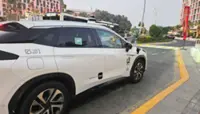San Francisco police request driverless car footage from Waymo and Cruise to solve crimes from robberies to murders. — Image by Freepik
In December 2021, San Francisco police were working to solve the murder of an Uber driver.
As detectives reviewed local surveillance footage, they zeroed in on a grey Dodge Charger they believed the shooter was driving.
Already a subscriber? Log in
Save 30% OFF The Star Digital Access
Cancel anytime. Ad-free. Unlimited access with perks.





